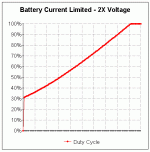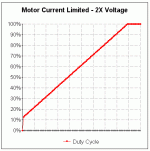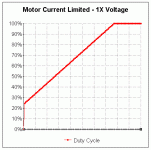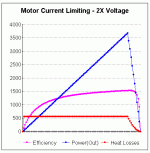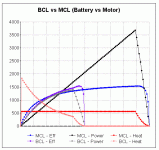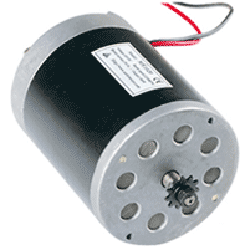safe
1 GW
- Joined
- Dec 22, 2006
- Messages
- 5,681
The equation for a simple and ideal motor for calculating heat is:
 Heat = Amps squared times the motors Resistance
Heat = Amps squared times the motors Resistance
From this we see that voltage is not in that equation. And yet power is expressed in watts which is:
 Power = Volts * Amps (minus losses to get the actual output)
Power = Volts * Amps (minus losses to get the actual output)
...so these equations suggest that if you double the voltage you double the power, but you don't increase the heat.
Wondeful! Maybe.... okay... maybe there is more to it...
First let's look at a Battery Current Limited controller that is operating at it's initial voltage... 1X:
From this we see that voltage is not in that equation. And yet power is expressed in watts which is:
...so these equations suggest that if you double the voltage you double the power, but you don't increase the heat.
Wondeful! Maybe.... okay... maybe there is more to it...
First let's look at a Battery Current Limited controller that is operating at it's initial voltage... 1X:




